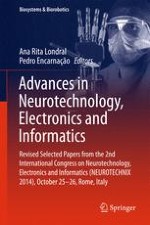2016 | OriginalPaper | Buchkapitel
Supervised EEG Ocular Artefact Correction Through Eye-Tracking
verfasst von : P. Rente Lourenço, W. W. Abbott, A. Aldo Faisal
Erschienen in: Advances in Neurotechnology, Electronics and Informatics
Aktivieren Sie unsere intelligente Suche, um passende Fachinhalte oder Patente zu finden.
Wählen Sie Textabschnitte aus um mit Künstlicher Intelligenz passenden Patente zu finden. powered by
Markieren Sie Textabschnitte, um KI-gestützt weitere passende Inhalte zu finden. powered by
